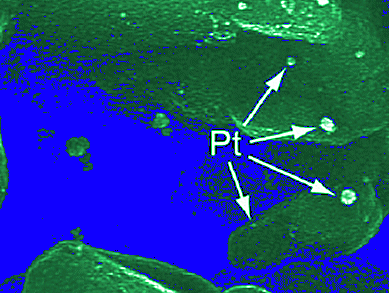Hydrogen production from water using solar light is now an important research subject in view of energy and environmental issues.
A team from the Research Center for Solar Energy Chemistry, Osaka University, Japan, and Department of Chemical System Engineering, The University of Tokyo, Japan, fabricated a CuInS2 film on a Mo-coated glass substrate by the electrodeposition technique. Photoelectrochemical characterization clarified the flat band potential of the compound: this revealed the requirement of a bias potential or integration in a tandem device to induce overall water splitting on this material.
The formation of heterojunctions by surface coverage of the CuInS2 film with n-type buffer layers, such as CdS and ZnS, followed by loading of Pt deposits made them efficient H2-evolving photoelectrodes.
Although the materials used in the study include rare and/or toxic elements i.e., In, Cd, and Pt, the system can be extended to the electrodes based on abundant and less-toxic elements. Studies along these lines are now in progress.
- Photoreduction of Water by using Modified CuInS2 Electrodes,
S. Ikeda, T. Nakamura, S. M. Lee, T. Yagi, T. Harada, T. Minegishi, M. Matsumura,
ChemSusChem 2010.
DOI: 10.1002/cssc.201000169




